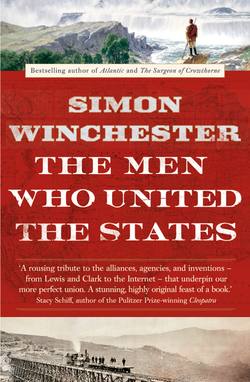Читать книгу The Men Who United the States: The Amazing Stories of the Explorers, Inventors and Mavericks Who Made America - Simon Winchester, Simon Winchester - Страница 25
THE LASTING BENEFIT OF HARMONY
ОглавлениеThe small southwestern Indiana town of New Harmony is not much to see these days—just a clutch of frame houses on the banks of the slow-drifting Wabash River. It is neat and tidy, quiet and peaceful. Nine hundred or so people live there, deep in the lush countryside where Kentucky, Illinois, and Indiana meet, down in the broad alluvial farmlands of the Ohio and the Mississippi Rivers that sidle past, not too far away.
A closer look at the town will hint at links with an interesting past. There is a museum designed by Richard Meier; a roofless church of curious design, which turns out to have been built by Philip Johnson; and a pair of spectacular gates designed by the cubist sculptor Jacques Lipchitz. All were created to memorialize that brief time in the early nineteenth century when New Harmony, as its name might now suggest, was founded to be the spiritual center of a great social experiment.
It was among the earliest of a scattering of similarly optimistic, hope-filled communities that sprang up in the early days of the United States, but New Harmony enjoyed a peculiar connection with that most elemental and unifying aspect of the stripling American nation: its geology.
To understand the geology of a country is to understand and then to realize all of its possibilities—its wealth, its strengths, the nature and kinds and value of its resources. Geology, after all, and without any intended pun, underlies everything. Human settlement on an unknown landscape perforce depends on a deep knowledge of what and where is potentially being settled—on whether the geology of this region suits it to farming, to mining, or to industry heavy or light; whether this range of hills is traversable, this cold prairie is cultivable, this wide river is fordable.
There can be no gainsaying the importance of the first crude discoveries made by the geological pioneers of early America: their findings, surveys, maps, and forecasts were the guides and lures that tempted and then scattered millions of people across the country. Eighteenth-century geology, infant science though it still may have been, offered the keys to unlock the country’s promise, bringing men out to inhabit the farther reaches of this country and create their nation.
And the town of New Harmony, Indiana, was where this realization of geology’s importance was born.
The town, first simply named Harmonie, was settled initially by early-nineteenth-century Germans, men and women fleeing to America much as the Pilgrim Fathers had fled two centuries before, to escape religious restrictions back home. Their piety and hard work paid off quickly, and they eventually moved on to larger quarters, selling their tiny settlement to another idealist adventurer, the campaigning Welsh socialist Robert Owen. He, flushed with the success of a millworkers’ commune that he had organized outside Edinburgh, planned to establish a utopian beachhead in America, based on socialist ideals. He renamed the former German village New Harmony; and once he had settled during the winter of 1825, he invited like-minded idealists to join him.
Such was the educational reputation of Owen’s earlier Scottish experiment that New Harmony became an immediate magnet for intellectuals, philosophers, teachers—and, in particular, scientists. Geologists, most notably, pitched in with a special enthusiasm, such that at the peak of New Harmony’s fortunes, no fewer than seven geologists of considerable later distinction could be counted among the inhabitants.
This tiny town briefly became “a scientific center of national significance,” as the University of Southern Indiana describes it today. New Harmony can fairly be regarded more specifically as the birthplace of American geology—not least because Robert Owen’s closest colleague and ideological soul mate, an equally eccentric visionary who came to join him on the banks of the Wabash River, is generally acknowledged today to be American geology’s founding father. He, too, was a foreigner, a middle-aged Scotsman of wealth and distinction whose fortune was in no way connected to the science of the earth—William Maclure.
